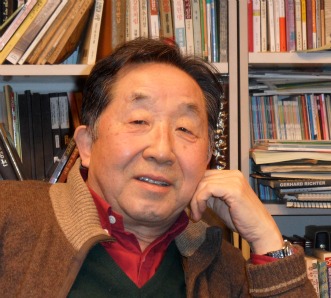By Jeongnam Kim
(Former Senior Presidential Secretary for Education·Culture·Society, World Korean News advisor)

Ever since this past March when the director of the National Oceanic Bureau of China made public that Eo-do Island is included in China's ocean patrol area, this 'island of non island' has come to the attention of both Korea and China. Eo-do is an southernmost island of Korea, 149km from Mara-do Island, composed of four rocks jutting from the 4.6 sea bed. It is 287 km away from West Sandao of China.
Internationally, these rocks are called Socotra Rock, named after an English merchant ship which had wrecked on this place. According to the regulations of a law legislated by the United Nations, the Exclusive Economic Zone is set at 200 sea miles, or approximately 370km, and therefore Eo-do is located within the area where the EEZ of both Korea and China is overlapped. Under these circumstances, it is usually accepted to set the oceanic boundary of the two countries involved at the medium distance from both countries. EO-do is 89lm closer to Korea from the borderline.
Korea and China have failed to reach an agreement on the border in the seas even though they have met on 16 occasions for its negotiation ever since 1996. Because China insisted on its demand that the length of the coastline, and together with the continental shelf be the standard of the Oceanic borderline. In the meantime, Korea started in 1995 the construction of a EO-do Oceanic Scientific Base, and since 2003 actively collected the research data of the oceanic and climate conditions. In addition, Korea have published the results of the research programs for the last 10 consecutive years. Eo-do is deeply imprinted in the emotions and culture of the Korean people in general as well as the Cheju islanders, not to mention the fact that it has been under the effective control of Korea and the fact that the island is nearer to Korea.
The Eo-do Song, which starts with a lyric "Eotssa, of Eo-do," tells us very well how deeply the island is impressed in the emotions of the Cheju people. Ever since a long, long time ago, the Cheju Island people believed that when some people went out to seas for fishing and failed to return home stricken by storms, they believed that the missing people would happily live on the Eo-do. To the Cheju Islanders, Eo-do was the island of comfort and hope consoling them for the hardship of the reality and the sorrow for their lost souls.
This kept gradually expanded and deepened, and now it has become an emotion of the general public of all Koreans. poet Go Eun had written this poem long before the Eo-do Island became an issue of the International conflict.
Nobody's been there/ But some people went there
The fact is they didn't come back/ There are there
No, what we see are waves
The waves taking our breath away
Not only this but the novel titled Eo-do by Lee Cheong-jun is known as a masterpiece which managed to crystallize the feelings of the Korean people about this island. In addition, Gim Jong-han wrote a novel in 1940 in which some mention of the island is inserted.
This island is in this way living in the minds and spirits of the Korean people. No other documents are more telling about the fact that the Eo-do Island has been under the control of the Koran authorities and the fact that the island should be under the control of Korea.


